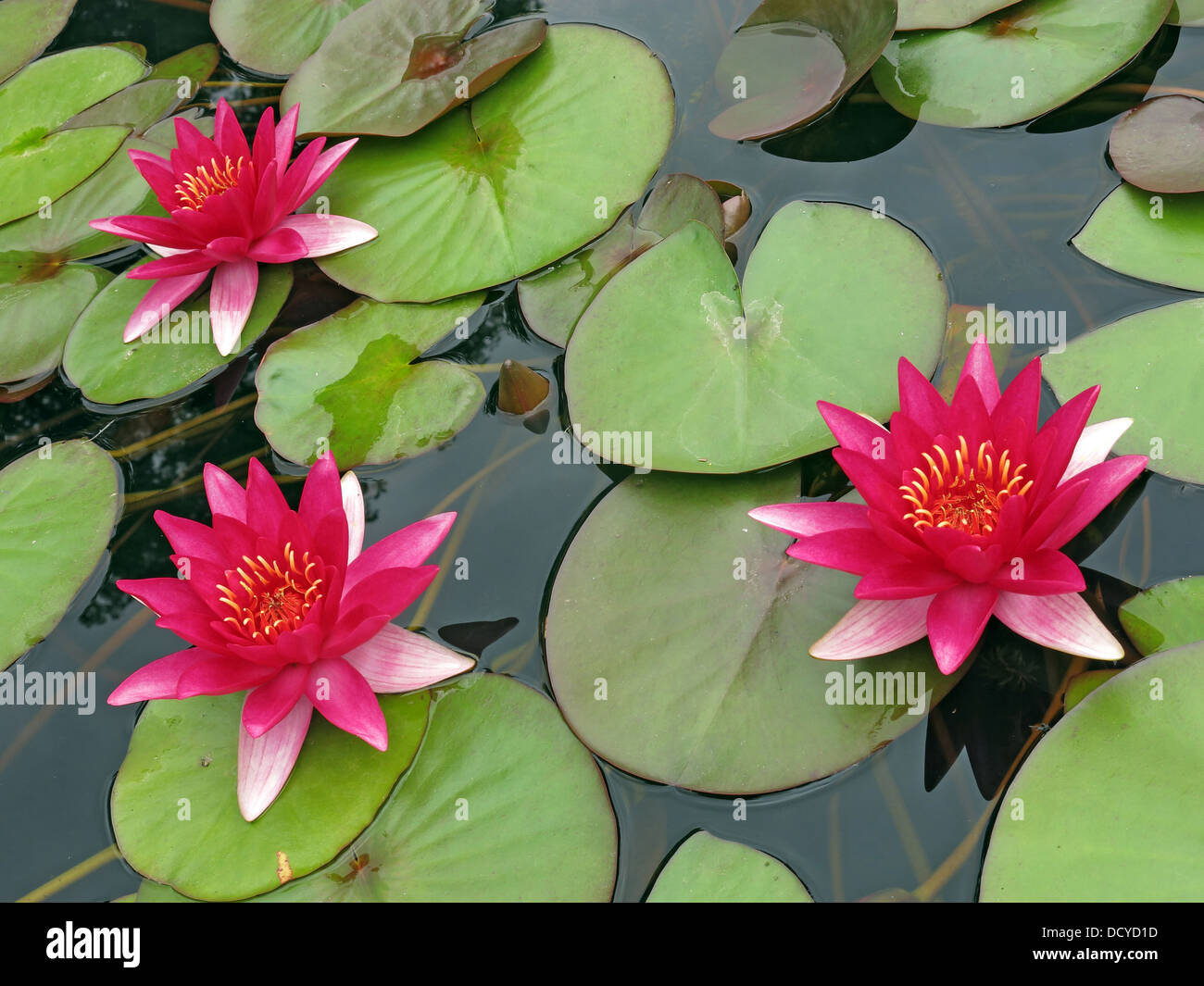Pink red water lilly - Nymphaeaceae

Image details
Contributor:
Tony Smith / Alamy Stock PhotoImage ID:
DCYD1DFile size:
34.3 MB (1.1 MB Compressed download)Releases:
Model - no | Property - noDo I need a release?Dimensions:
4000 x 3000 px | 33.9 x 25.4 cm | 13.3 x 10 inches | 300dpiDate taken:
9 August 2013More information:
Nymphaeaceae is a family of flowering plants, commonly called water lilies. They live as rhizomatous aquatic herbs in temperate and tropical climates around the world. The family contains five genera with about 70 known species. Water lilies are rooted in soil in bodies of water, with leaves and flowers floating on or emergent from the surface. The leaves are round, with a radial notch in Nymphaea and Nuphar, but fully circular in Victoria and Euryale. Water lilies are a well studied clade of plants because their large flowers with multiple unspecialized parts were initially considered to represent the floral pattern of the earliest flowering plants, and later genetic studies confirmed their evolutionary position as basal angiosperms. Analyses of floral morphology and molecular characteristics and comparisons with a sister taxon, the family Cabombaceae, indicate, however, that the flowers of extant water lilies with the most floral parts are more derived than the genera with fewer floral parts. Genera with more floral parts, Nuphar, Nymphaea, Victoria, have a beetle pollination syndrome, while genera with fewer parts are pollinated by flies or bees, or are self- or wind-pollinated.[3] Thus, the large number of relatively unspecialized floral organs in the Nymphaeaceae is not an ancestral condition for the clade. Water lilies do not have surface leaves during winter, and therefore the gases in the rhizome lacunae access equilibrium with the gases of the sediment water. The leftover of internal pressure is embodied by the constant streams of bubbles that outbreak when rising leaves are ruptured in the spring.